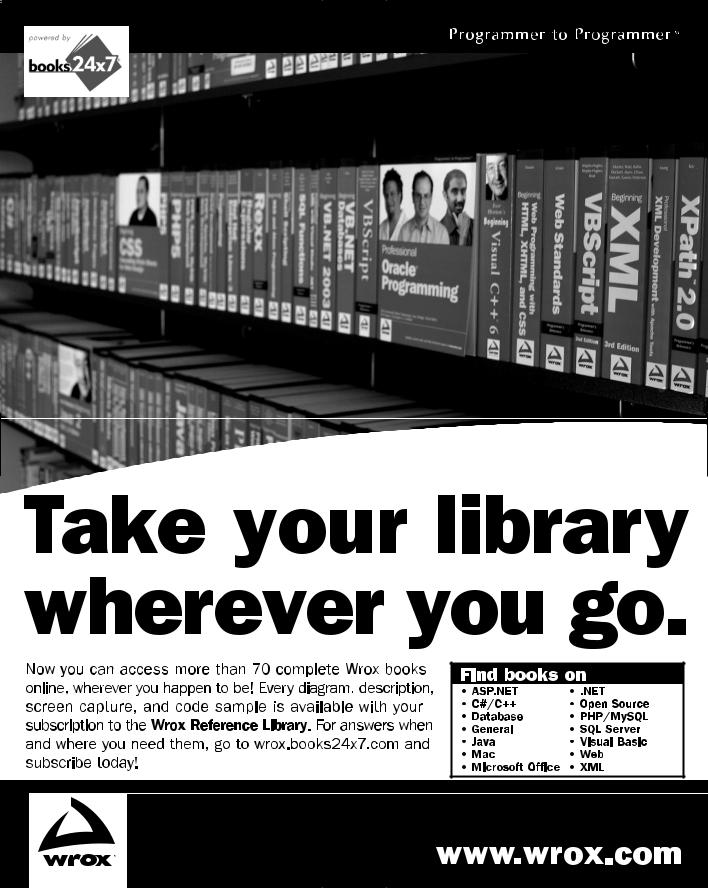VSTO approaches to, 2 VSTO disadvantages, 9–10 workbooks
data protection, 57–60 password protection, 55–57
Selection object, 114–115
Send button, email, 162
serialization, Excel range manipulation, 34 series, charts, 216, 226 seriescollection value, charts, 235 server component, VSTO, 3–4
ServerDocument class, 100
server-side automation, Excel automation, 95–99 server-side processing, Microsoft Office, 3
SetBackgroundPicture method, 42–43 setup application, VSTO installation, 11
Shapes property, 267 shortcutbar keyword, 195
ShrinkToFit method, 71
Shutdown method, 148 signing digital certificates, 64
Simple Mail Transfer Protocol (SMTP), 157 slicing and dicing concept, pivot tables, 280 smart tags, Word automation
click events, 142 design-time, 140–141 labeling text with, 139
MOSTL (Microsoft Office Smart Tag List), 140, 142 regular expressions, 142
runtime implementation, 141 sample XML file, 140
SMTP (Simple Mail Transfer Protocol), 157 sorting, AllowSorting parameter, 59 SPCs (software publisher certificates), 64
Speak method, 287
special needs charts, 268–271
spell checking documents, Word automation, 122
Split method, 119
spreadsheets. See Excel automation SQL database, 19
stand-alone charts, 219–220 stand-alone version, VSTO, 4 startup events, 72
Startup method, 92, 148
StringBuilder object, 94 strongly named assemblies, 63–64 style customization
Excel toolbars, 85 pivot tables, 287–288
Word table automation, 117–119
subject properties, Outlook appointments, 172 subtypes, charts, 211
SUM Excel formula, 68
SUMIF Excel formula, 68
surface area customization, charts, 240–242
system clipboard, Word toolbar customization, 127–128 system requirements, VSTO, 6–7
System.Globalization namespace, 264
System.IO namespace, 21
System.Reflection namespace, 169
System.Runtime.InteropServices namespace, 169
T
tables charts, 218
table manipulation, Word automation adding tables to documents, 115–116 cell merging, 119
cell splitting, 119 headings, 119
row implementation, 116
runtime exception avoidance, 119 table styles, 117–119
Tag property, 133 templates
availability, VSTO installation, 12 Word automation
button click events, 126 document processing, 123–126
termination, applications, 30 testing digital certificates, 64
third party products, as VSTO Office system alternative, 9
ThisApplication object, 108–109 3-D functional charts, 258–260, 270 tick marks, charts, 228–232
time scaling, charts, 215
time-saving techniques, design-time charting, 209 title object, charts, 213–214
toolbars
Excel
buttons, adding, 82 click event handler, 83 Formula Auditing, 67 style customization, 85
Outlook
buttons, adding, 192–194 buttons, removing, 194–195










